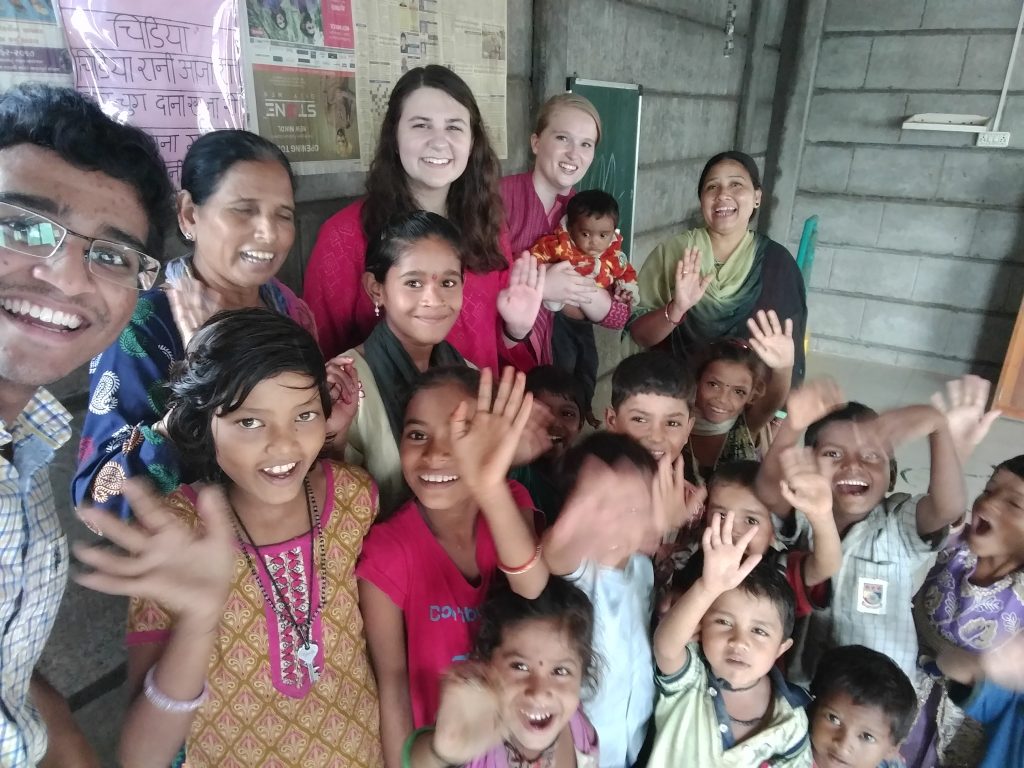
Ahmedabad is a vibrant city with rich historical significance. On one end, it was the site of Gandhiji’s Sabarmati Ashram – a central symbol of peace, unity, and power during India’s tumultuous campaign for independence. Now, Ahmedabad is growing and building in unique ways in response to challenges of its own. In the early 2000s, riots between Hindus and Muslims left the city with increased violence and lowered morale. Coupled with rapid migration of people from rural villages seeking livelihood opportunities, it saw an expansion of slum-populated areas. This created inequality between pockets of the population and necessitated a shift towards development and progress. Ahmedabad became a hub for social organizations and took the view of an “aspirational society” – a mindset that pervaded many aspects of my time in India and work with Saath Charitable Trust.
I spent the summer working on Saath’s Child-Friendly Spaces (CFS) project. In the short term, CFS centers provide safety, education, and nutritional support for children of migrant construction laborers, who live and work in colonies established near construction sites. Saath’s larger goal is to encourage and counsel families to eventually enroll their children in government schools. Thus, CFS centers also need to prepare these students with basic skills so that they are ready to meet the rigors of a formal education. I entered my DukeEngage experience eager to contribute to this goal in any capacity that I could.
Initial meetings with our Saath project mentors helped identify a key area where this contribution could take shape. The teachers lacked a designated curriculum, and instruction varied significantly across the seven site locations. My teammates and I decided to create a teachers’ handbook with interactive lessons plans for activities that spanned areas such as language, basic math, creative development, and mental development. Our goal was to provide the teachers with a resource that they could use to both standardize classrooms and keep students excited, motivated, and engaged. With a concrete plan and enthusiasm for our project, we began developing Saath’s first CFS curriculum.
Initially, field visits consisted mostly of observation. We toured several sites and labor colonies, interviewed teachers, and learned as much as we could about their classroom procedures. This gave us a strong operational knowledge of the CFS program, which we used to begin developing our teachers’ handbook. However, as we would quickly learn, sometimes facts are not enough to put an idea into practice. About a quarter of the way through the handbook, we decided that we were ready to try some of the activities with CFS students. But, to me, this presented more challenges than anticipated. How was I to communicate with students across a vast age range – and that too, while facing a language barrier? I had known that there are students from just a few months to around 14 years old all in a single CFS classroom, and most of them speak only Gujarati. But our activities hadn’t been planned with this in mind just yet. Unable to keep all the kids engaged and entertained, I returned to the office a bit dismayed and questioning how to proceed. Very soon, Ahmedabad started to showcase its “aspirational society” nature.
My teammates and I began working more closely with our Saath mentors to improve our activities and benefit the students’ learning. Our mentors gave us valuable encouragement and guidance. They had an overflowing enthusiasm for our project and the impact it would have on establishing a dedicated CFS curriculum for the first time. The teachers were also instrumental in helping us better understand the community and surmounting the barriers we initially faced. I would often speak to them in Hindi, and they would translate into Gujarati so that the students could understand. They also provided valuable tips on engaging more students, despite the varying age groups. Soon, the students also overcame their shyness and brought forth a contagious spirit of happiness and eagerness to play with us and learn in the process.
By the end of summer, when I walked into the classroom, it was always with a big smile. And right as I entered, I would be greeted with a reciprocal chorus of laughter and excitement from the students. The warm relationship that formed between us has made my work with Saath quite memorable and meaningful. The many lessons I will take away from this experience have given me an important outlook on service – to successfully contribute, one must first understand the community, its perspectives, and build connections with the diverse people he is working with.
